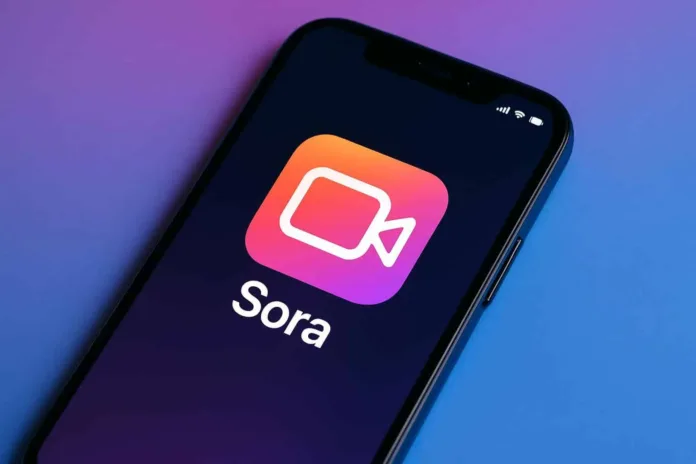Table of Contents
Sora, OpenAI’s latest breakthrough video application has quickly become a sensation by reaching one million downloads in less than five days. This remarkable achievement signals a fresh wave of interest in AI-generated video content, surpassing the early adoption rate of ChatGPT. At Squaredtech, we analyze what Sora’s rapid growth means for the AI community, creative industries, and the ongoing legal debates surrounding copyright and use of public figures in AI creations.
Sora’s Rapid Rise: A Powerful Shift in AI Content Creation
Sora is a cutting-edge text-to-video AI tool developed by OpenAI that allows users to generate short, realistic videos from simple text prompts. These clips last about ten seconds and showcase high-quality animation and visual fidelity that have captured public attention. Since launch, Sora has topped the Apple App Store charts in the United States, quickly establishing itself as a must-have app for creators and casual users alike.
Bill Peebles, the head of Sora, announced the milestone on the social media platform X, emphasizing the rapid growth despite the app’s availability being limited. Currently, Sora is accessible only to invited users in North America, yet its usage has exploded, demonstrating a strong appetite for video generation AI beyond text-based models like ChatGPT.
Read More About Our Article of Amazon Pharmacy to introduce vending machines for prescription medications Published on October 9th, 2025 SquaredTech
This surge reflects broader trends in AI, with tools moving from text toward richer media generation. Sora’s success points to increasing user demand for AI applications that simplify content production and support creative expression through accessible technology.
Controversies: Copyright Concerns and Use of Deceased Public Figures
While Sora’s popularity grows, it faces significant criticism related to copyright issues and ethical questions about generating videos featuring recently deceased celebrities. Social media is flooded with AI-generated videos of well-known public figures, including controversial depictions of musicians like Michael Jackson and Tupac Shakur.
The emotional impact led Zelda Williams, daughter of the late actor Robin Williams, to publicly ask users to refrain from creating AI videos of her father. Such pleas highlight the sensitivity surrounding the digital resurrection of deceased personalities, especially when accompanied by lifelike portrayals that can be unsettling to families and fans.
OpenAI has responded to these concerns by acknowledging the importance of free speech while balancing respect for individuals. An OpenAI spokesperson told Axios that the company supports the depiction of historical figures but permits authorized representatives of recently deceased public figures to request restrictions on likeness usage. However, OpenAI has not clearly defined what qualifies as “recent,” leaving some ambiguity in enforcement.
This nuanced stance attempts to weigh creative freedom against personal dignity and copyright protection, but it has not quelled all ethical debates or user unease.
Copyright Challenges and Legal Battles Ahead
Sora has also raised major copyright questions because many AI-generated videos include characters from movies, television, and video games. For example, one viral video shows OpenAI CEO Sam Altman interacting humorously with Pokémon characters, prompting worries about the use of Nintendo’s intellectual property. Although Nintendo has not announced legal action, the case highlights ongoing tensions between AI developers and rights holders.
Several companies providing generative AI systems face lawsuits from creators who claim their original works were used without permission to train AI models. AI firm Anthropic recently settled a hefty $1.5 billion class-action lawsuit with authors accusing it of copying their writing to build AI capabilities.
OpenAI acknowledges these challenges. In a blog post dated October 4, Sam Altman described the company’s effort to learn from user feedback, rights holders, and interested parties as they evolve Sora. OpenAI plans to give rights holders more detailed control over how their characters and creations appear in AI-generated content.
Moreover, OpenAI hinted at future revenue-sharing arrangements that would compensate content creators whose works contribute to or inspire AI videos. This might transform how copyright and digital content ownership function in the AI era.
Nevertheless, it remains unclear whether rights holders will view Sora videos as harmless “interactive fan fiction,” a term Altman used, or as unauthorized use that requires judicial intervention. The outcome of these evolving legal and ethical questions will shape the future of AI video generation tools, including Sora.
What Sora’s Growth Means for the AI Industry and Users
At Squaredtech, we see Sora’s rapid download milestone as a sign that AI video generation is entering mainstream adoption quickly. Compared to textual AI models like ChatGPT, video generation demands higher technical complexity. Yet the public’s enthusiastic acceptance suggests that AI tools producing multimedia content appeal broadly to creators and consumers eager to experiment with new formats.
The app’s ability to easily share AI-generated videos on social media fuels viral trends and user engagement, amplifying interest further. But this dynamic also intensifies concerns for content regulation, copyright law, and ethical usage, requiring AI developers and lawmakers to respond with clearer guidelines.
Sora’s trajectory offers a preview of future AI content tools that blend creativity, automation, and social media communication more seamlessly than before. Squaredtech will continue tracking how OpenAI and the industry address issues of copyright, user rights, and the boundaries of AI-generated likenesses as this technology evolves.
Stay Updated: Artificial Intelligence


